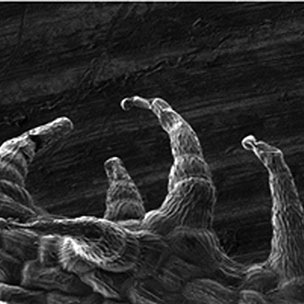April 3, 2015 — It will come as no surprise to Ensia readers that nature has a lot of answers we could use to solve our most dire problems related to the environment. We’ve touched on the topic a number of times, from short notables to op-eds to feature stories. But figuring out how exactly nature pulls off its tricks isn’t always an easy job, much less translating that into human technology to make our systems more circular and efficient and less wasteful.
In an effort to “pave the way to new bioinspired technology for alleviating global water shortages,” researchers in Japan took an extremely close look at plants with hairs on their leaves that collect water from the air, for example through mist. Plants included tomato, balsam pear, Berkheya purpurea and Lychnis sieboldii, the last of which led to this video, which shows the change in the plant’s morphology that occurs when it’s capturing water during wet periods for use in drier times. Essentially, the hairs on these plants’ leaves create a cone shape when collecting water and then twist perpendicularly to release the stored water onto leaves when it’s needed. Fibrous materials within the hairs, the researchers speculate, are part of the water collection and release process. In the article, which appeared in this week’s issue of Applied Physical Letters, the researchers show through simulations what’s happening on the leaves in an effort to show how the process could be translated into biomimetic water storage systems in areas facing water shortages. ![]()
Ensia shares solutions-focused stories free of charge through our online magazine and partner media. That means audiences around the world have ready access to stories that can — and do — help them shape a better future. If you value our work, please show your support today.
Yes, I'll support Ensia!

